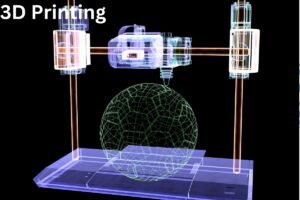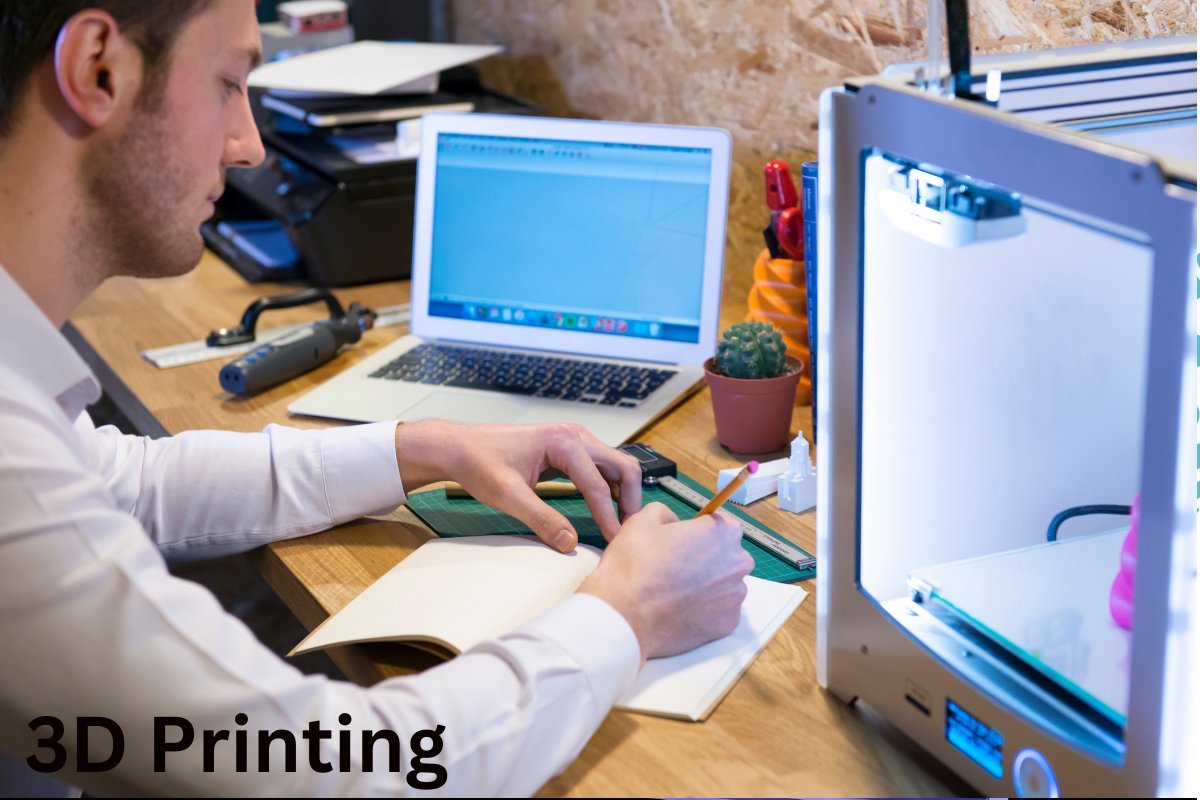3D Printing: Revolutionizing Manufacturing and Beyond
3D printing, also known as additive manufacturing, has emerged as a groundbreaking technology that is reshaping various industries. From prototyping to medical advancements, the applications of 3D printing are vast and ever-expanding. In this article, we will explore the world of 3D printing, its evolution, applications, benefits, challenges, and future trends.

Introduction to 3D Printing
What is 3D printing?
3D printing is a process of creating three-dimensional objects from a digital file by adding successive layers of material until the object is formed. This technology allows for the creation of complex shapes and designs that would be difficult or impossible to achieve with traditional manufacturing methods.
How does 3D printing work?
The process of 3D printing begins with a digital 3D model of the object to be printed. This model is sliced into thin horizontal layers using specialized software. The 3D printer then reads these slices and builds the object layer by layer, typically using materials such as plastic, metal, or resin.
Evolution of 3D Printing Technology
Early developments
The concept of 3D printing dates back to the 1980s when the first patent for a 3D printing technique was filed. However, it wasn’t until the 2000s that 3D printing began to gain traction as advancements in technology made it more accessible and affordable.
Advancements over the years
In recent years, there have been significant advancements in 3D printing technology, including faster printing speeds, improved accuracy, and a wider range of printable materials. These advancements have expanded the applications of 3D printing across various industries.
Applications of 3D Printing
Prototyping
One of the primary uses of 3D printing is rapid prototyping. It allows manufacturers to quickly create prototypes of new products, enabling faster iteration and refinement of designs.
Manufacturing
3D printing is increasingly being used in manufacturing processes to produce customized parts and components with intricate geometries. This flexibility makes it ideal for small-scale production runs and on-demand manufacturing.
Medical field
In the medical field, 3D printing is revolutionizing patient care by enabling the creation of customized implants, prosthetics, and surgical guides. It has also been used to create organ models for surgical planning and medical training.
Education
3D printing has become a valuable tool in education, allowing students to visualize and interact with complex concepts in subjects such as science, engineering, and design. It promotes hands-on learning and creativity.
Benefits of 3D Printing
Customization
One of the most significant advantages of 3D printing is its ability to create customized objects tailored to specific requirements. This is particularly beneficial in industries such as healthcare and aerospace, where personalized solutions are often needed.
Cost-effectiveness
While the initial investment in 3D printing technology can be significant, the long-term cost savings can be substantial, especially for small-scale production and prototyping. It eliminates the need for expensive molds and tooling.
Reduced waste
Traditional manufacturing processes often result in significant material wastage due to subtractive manufacturing techniques. In contrast, 3D printing is an additive process that only uses the material required for the object, minimizing waste.
Challenges and Limitations
Material limitations
While the range of printable materials for 3D printing has expanded in recent years, there are still limitations in terms of strength, durability, and suitability for certain applications. Finding the right material for a specific use case can be challenging.
Quality concerns
Achieving high-quality prints consistently can be challenging, particularly with desktop 3D printers. Issues such as layer adhesion, warping, and surface finish can affect the final outcome of printed objects.
Intellectual property issues
The ease of replicating objects with 3D printing technology has raised concerns about intellectual property rights and copyright infringement. Protecting digital designs from unauthorized use and distribution is a growing challenge.
Future Trends in 3D Printing
Bioprinting
One of the most exciting developments in 3D printing is bioprinting, which involves printing living cells and biomaterials to create tissues and organs. This technology has the potential to revolutionize regenerative medicine and organ transplantation.
Space exploration
3D printing is playing a crucial role in space exploration, where traditional manufacturing methods are impractical. NASA has already successfully tested 3D-printed rocket engine components and is exploring the possibility of using 3D printing to construct habitats on other planets.
Conclusion
3D printing has emerged as a transformative technology with wide-ranging applications across various industries. From prototyping to medical advancements, the potential of 3D printing is vast and continues to expand. While there are challenges and limitations to overcome, the future of 3D printing looks promising, with exciting developments on the horizon.
FAQs (Frequently Asked Questions)
- Is 3D printing expensive?
- The cost of 3D printing varies depending on factors such as the type of printer, materials used, and the complexity of the object being printed. While there may be upfront costs, 3D printing can offer long-term cost savings, especially for customized or low-volume production.
- Can 3D printing be used for mass production?
- While 3D printing is ideal for small-scale production and rapid prototyping, it is not yet suitable for mass production due to limitations in speed and cost. However, advancements in technology may eventually make mass production with 3D printing more feasible.
- Are there any limitations to what can be 3D printed?
- While 3D printing can create complex shapes and designs, there are limitations in terms of size, materials, and structural integrity. Large-scale objects may require specialized equipment, and certain materials may not be suitable for 3D printing.
- Is 3D printing environmentally friendly?
- 3D printing has the potential to be more environmentally friendly than traditional manufacturing methods due to reduced material wastage. However, the environmental impact depends on factors such as the type of materials used and energy consumption during printing.
- What are the ethical implications of 3D printing?
- 3D printing raises various ethical concerns, including intellectual property rights, safety, and security. As the technology continues to evolve, it will be essential to address these concerns and ensure responsible use of 3D printing technology.
